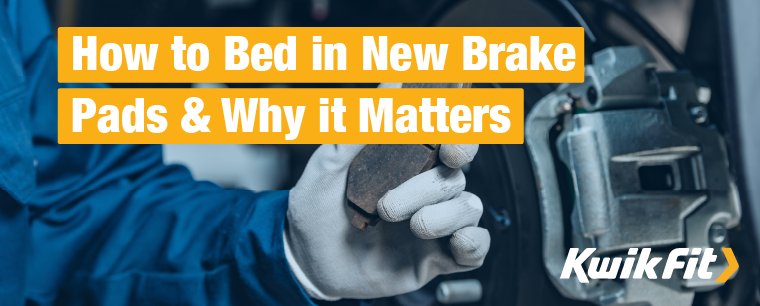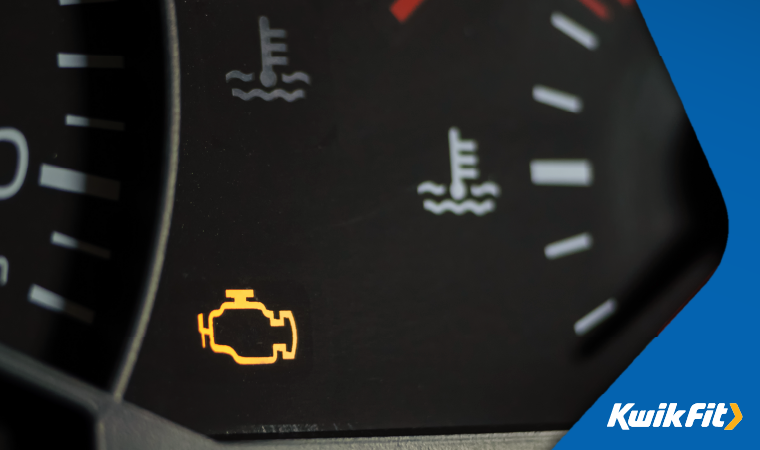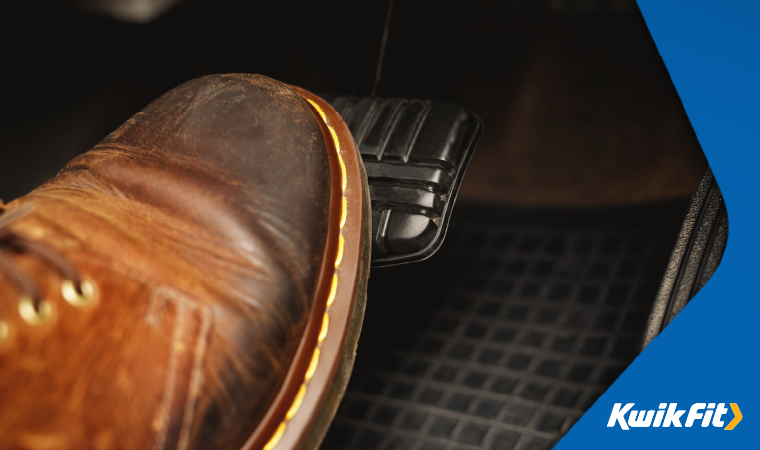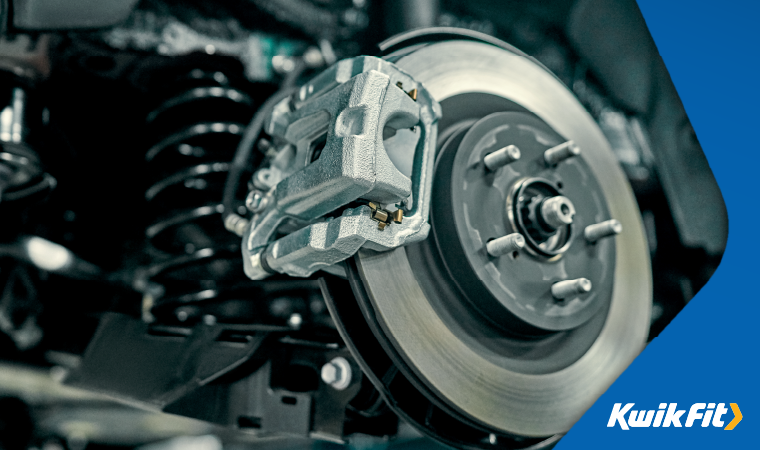How to Bed in New Brake Pads & Why it Matters
Jack Dreyer | Friday 19th January 2024 9:00am

Brake pads are one of the most important features when it comes to road safety and vehicle performance. In order to maximise braking performance and achieve optimal stopping power, all brake pads must be "bedded-in”, and they must be bedded in properly.
Whether you’ve recently invested in a set of high-performance brake pads, or are looking to simply understand the process further, read our complete guide on how to bed in new brake pads, and why it is so important.
The Importance of bedding in new brake pads
Let's start with what brake pads are, and their function. Brake pads are a vital component of every vehicle. They allow you to stop safely in a range of situations and are crucial for avoiding collisions. These pads, fitted in the calliper, are pushed into the sides of the brake disc when you press the brake pedal, and the resulting friction allows you to bring the car to a stop.
Ensuring your braking components are working properly is an important safety concern. Brake pads wear out over time, and should be checked regularly - both for the safety of yourself, and for other road users.
Bedding in brake pads essentially means ‘breaking in’ your brakes, and this is crucial to ensuring the performance, safety and longevity of both your vehicle and your overall braking system. Essentially, assisting in smoother brake operation and improved overall braking power. Failure to bed-in your brakes can lead to uneven buildup of film on the rotors, resulting in "brake judder".
When & how to bed in new brake pads
There is no specific or definitive time in which you need to change or bed in new brake pads on your vehicle. This can differ depending on different driving patterns or the condition of your brake rotors. For example in our previous blog, we mentioned that a set of brake pads could last up to 60,000 miles or more on a car driven mostly on the motorway. However, the brakes on the same car driven mostly in busy city centre traffic may last only 25,000 miles or less.
On average, front brakes normally wear out a lot quicker than rear brakes, because they handle around 70% the braking load, with the remaining 30% accounted for at the rear.
It is often recommended that car brake pads should be replaced if the pad friction material has worn down to a thickness of 3 millimetres. However, because there are no strict rules on how many miles you’ll get out of your brake pads, there are a number of signs to look out for when looking to see if your brake pads need replacing.

Look for warning lights
You may see a brake warning light appear on your dashboard, either continuously, or only when you apply the brakes - usually indicating that your car brake fluid level is critically low. If you have a newer car model, these are often fitted with sensors that will tell you if the front or rear brake pad sets are getting worn down to below a safe level. However, older or more economical vehicles may not have these sensors.
In these cases, you’ll need to make sure to regularly check your brake pads - usually around every 6 months or every 15,000 miles on average. A full brake inspection is also often included in a Full Service.
Listen for grinding /squeaking sounds
One of the most common ways to spot an issue with your vehicle is by listening out for unusual sounds. When determining the quality of your brake pads, listen out for a squeaking sound when you apply your brakes, as this is a strong indication that you must replace them. You may also recognise your vehicle making a grinding sound - this happens when the friction material on brake pads is heavily worn down to the metal calliper, once again meaning that replacements are required. .
Feel for unusual movement
Another tell-tale sign of damage and wear is if either the brake pedal vibrates when you press it, or if your car pulls to one side when you’re driving. These signs usually show that it is likely to have a problem with the braking system.
Unusual movement can include:
- Pulling - When applying your brakes with unworn, working brake pads, you should not experience any pulling or issues with directions. If your car does pull to the left or right when you apply the brakes, it is likely a sign of uneven wear to your brakes.
- Pulsating - Another movement may be a continuous pulsating from your car's brake pedal whenever you apply the brakes. This occurs because the brake disc is distorted and no longer provides a perfectly flat surface when the brake pad makes contact.
Whether you experience either of these unusual movements, or if you are simply a little concerned about your brakes, you should have them checked out to ensure full safety.

Sponginess or soft brake pedal
The final main sign to look out for is spongy or soft brakes. If the car brake pedal is limp and goes all the way to the floor, this indicates a serious braking system fault which you should have inspected immediately - amongst other meanings, this usually indicates that the brake fluid is ineffective and needs replacing.
Benefits of properly bedded brake pads
Properly bedded brake pads offer several benefits, whether that be enhanced performance, safety, or even improving the longevity of your vehicle's braking system. Ensuring you follow these simple steps and bedding in procedures will improve the overall driving experience, and will have ongoing benefits on your vehicle's overall braking system.
Benefits include:
Improved performance & braking power
Bedding-in new brake pads helps to improve braking performance. By ensuring properly bedded brake pads, you're ultimately improving your vehicle's stopping and braking power. Ensuring a smooth and even transfer of brake pad material onto the brake rotor results in a smoother experience overall.
Extended brake pad life
Not only does investing in good brake pads extend the life of your brakes, but bedding them in properly helps you do the same too. This promotes even wear across the brake pads and rotors, whilst preventing premature wear and tear, contributing a more cost effective repair.
Reduced noise and smoother journeys
As explained above, one of the key ways to notice your brake pads are worn is by listening for squeaking and grinding. By replacing your brake pads, and ensuring they have been bedded in appropriately, you will experience reduced noise coming from your vehicle, and therefore have a more comfortable driving experience.

Maintain a safe braking system with Kwik Fit
If you have ongoing issues with your brakes, and suspect they may need replacing, we recommend popping down to your local Kwik Fit centre to speak to one of our experts. They can provide a free brake check on your vehicle, before diagnosing and resolving any potential issues for you.
Interested in learning more about your vehicle, brake pad related or not? Keep up with our latest Kwik Fit blogs. Or, if you’ve got any specific questions, get in touch with our friendly teams today.
Any facts, figures and prices shown in our blog articles are correct at time of publication.
Featured Articles
Is it Illegal to Drive With One Headlight?
Saturday 19th July 2025
Wondering if it’s illegal to drive with one headlight? Learn about the safety risks and penalties of illegal blown bulbs and why you should fix them promptly.
Air Con in EVs & Hybrids: Experts Answer Your Questions
Monday 30th June 2025
Does air con drain EV batteries? Can you use the air con while charging an electric car? Find out the answers to these questions & more from Kwik Fit’s experts.
Why Is Your Car Making a Noise? Fixes & Tips
Friday 13th June 2025
When your car starts making unexpected noises, it can certainly be quite disconcerting; it may be nothing to worry about, but here’s what you need to know.









